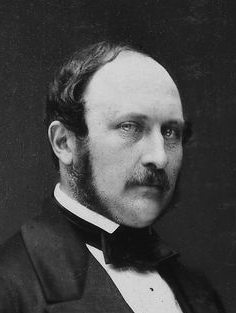 |
| Albert, Prince Consort 15 May 1860 J.J.E. Mayall Printed in carbon c.1889-91 by Hughes & Mullins 40 x 28.5 cm Commissioned by Queen Victoria (Photo credit: Wikipedia) |
Prince Albert may well be one of the most memorable British royals. Married to Queen Victoria in 1840, Albert, Prince Consort fathered nine children and was adored by his Queen, in fact following his death in 1861 , Queen Victoria was overwhelmed by grief and stayed in mourning for the remainder of her own life (an impressive 40 years during which she wore nothing but black and was rarely seen in public). Albert was said to struggle with being
“only the husband, not the master in the house"and as a result threw himself into various causes. He was a huge supporter of such public cause as educational reform and worldwide abolition of slavery. He also took on responsibility of managing the Queen's estates and household. In many ways he was a forerunner of the socialite wife we see in Manhattan! However, despite all of the good he achieved in his lifetime, none of this is his most well known achievement. The majority of people, on hearing 'Prince Albert' will refer to the body piercing of the same name!
The Prince Albert piercing is a male genital piercing extending along the underside of the glans from the urethral opening to where the glans meets the shaft of the penis. So what does that have to do with the Prince Consort? Well, while originally dismissed as urban myth, there as since been evidence to suggest that around the time of Albert's marriage to Queen Victoria, there was a fashion for tight men's trousers. However, this created an 'unsightly' bulge especially in the more well endowed man. Prince Albert thought this unseemly for a man of his position and had his penis pierced to allow it to be held to one side by a hook inside the trousers known as a dressing ring'. Tailors would at the time ask if you dressed to the let or right to allow them to tailor pants accordingly and today, traditional tailors will still ask! I doubt Prince Albert invented the piercing, it was probably, like so many other body modifications, discovered in other cultures – but as the most prominent wearer of such a piercing it will forever bear his name.






